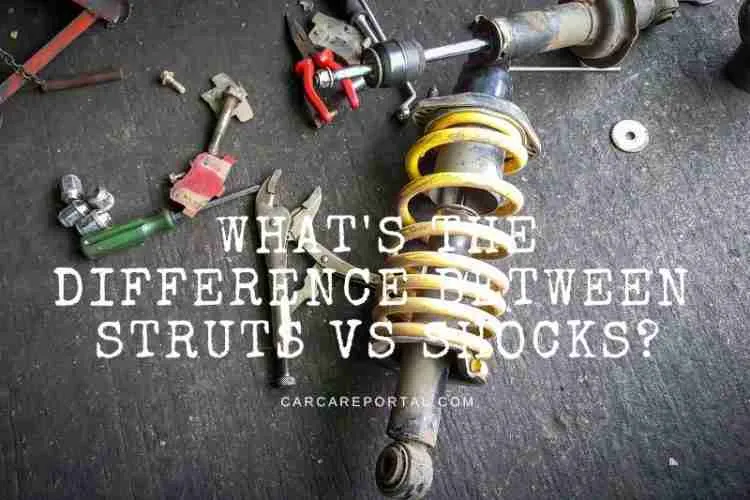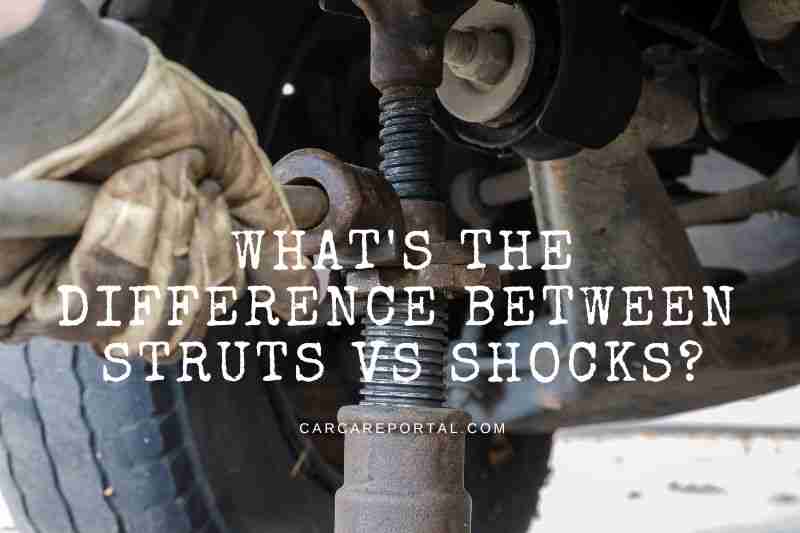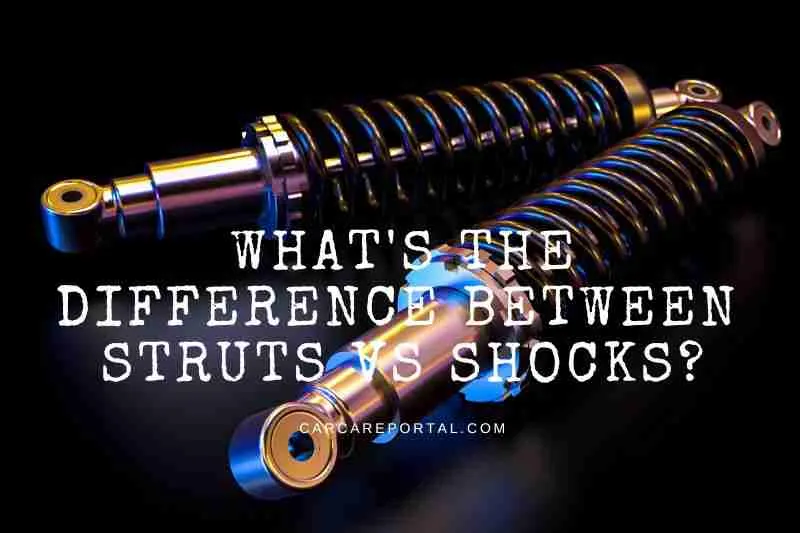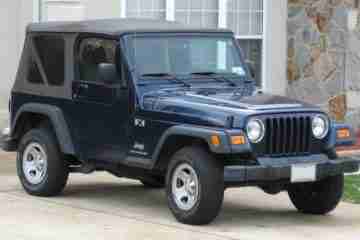What’s the Difference Between Struts vs Shocks? Tips New 2022

There are two main types of suspension systems in cars: Struts vs Shocks. Both serve the same purpose, which is to provide a comfortable ride by absorbing road bumps. However, they work in different ways. Struts are an integral part of the suspension system, while shocks are not.
What are shocks?
Shocks, also known as shock absorbers, play an essential role in the suspension system. They absorb energy and control the rebound and impact movement of the springs and suspension. The shocks will cause the truck’s wheels to bounce off and vibrate on rough roads.
A piston, a coil and hydraulic fluid are the critical components of a shock absorber. The shock absorber activates a compression cycle when the car’s wheel is lowered into a crevice or pothole.
A piston applies pressure to the hydraulic fluid in its upper chamber. This fluid helps to reduce the speed of the coil’s relaxation, which in turn prevents excessive bumpiness.

What are struts?
The suspension system’s structural component, the struts, is found on nearly all front-wheel-drive vehicles. A strut is a compact combination of many suspension components. These include:
- The Coil Spring
- The Spring Seats
- The Shock Absorbers
- The Strut Bearing
- Steering Knuckle
The most frequently serviced component of the strut assembly is the shock absorber.
The coil spring can support the vehicle’s weight and adapt to road imperfections like hills, bumps and valleys. The struts link the upper bearing and the lower ball joint so that the whole assembly can pivot in any direction.
The struts have multiple functions. The internal shock absorber dampens the vehicle’s movement as it compresses, rebounds, and supports its weight while moving. This allows it to adapt to road imperfections.
Struts vs Shocks
Although you may have heard shock and strut interchangeably, it is essential to understand that they are two different parts. They can’t be interchanged, even though they have the same job of dampening vehicle movement to maintain road control.
The difference is that shocks and struts are structural parts of vehicle suspensions. Many vehicles have shocks and struts, depending on the suspension type. This is true for many cars, but not all. Some may have separate shocks or springs.
Checking your owner’s manual or speaking with a qualified automotive technician can help determine if your vehicle needs struts and shocks. Below are some indicators that your shocks or braces may be worn out.

When to Replace Struts and Shocks?
The general rule replaces shocks and struts every 50,000-100,000 miles. However, this can change depending on many factors, such as the roads you drive.
These components will eventually wear out, so you may not notice any problems immediately. There are some things to be aware of:
- Bumpiness increases: Shocks and struts are designed to improve the handling of your vehicle. If your car is feeling bumpier or shaker on the road, it is a good idea to check these parts.
- Brake problems: Damaged shocks or struts can cause damage to other parts of your car. Brake diving is when your vehicle seems moving forward as you press the brake pedal. This can indicate wear.
- Tire wear: Regularly checking your tires for damage is important. If your tires are in poor condition, you can get your shocks and struts checked. Tire treads can develop cupped or scalloped dips from suspension damage.
- Leakage: Fluid seeping from your shocks and struts could indicate that something is wrong. Lack of fluid can cause shocks and struts not to absorb bumps and impacts.
A trained tech will be able to diagnose the problem and replace your shocks or struts, if necessary.
FAQs
1. Are All Vehicles Equipped with Struts?
Many vehicles have shocks on one side and strut on the other. Struts are not required for all vehicles. Your vehicle may use shocks or springs instead of struts, depending on how it was designed. There are several ways to determine if your vehicle has shocks and struts.
2. Are your vehicles in need of new shocks or struts?
Shocks and struts may wear down if you drive on rough or uneven roads or do a lot off-road. Your shocks and struts should be inspected every 50,000 miles or according to the maintenance schedule of your vehicle manufacturer.
If you aren’t sure when they were last checked, these signs will help you determine if it is time to have them checked again.
- It is difficult to steer if your vehicle moves around corners or changes lanes.
- When you brake, the front end of your car will dip down and the rear end will dip down when you accelerate.
- Tires wear out or have abnormally flat areas (cupping).
- The vehicle bounces too often
- Poor steering response or you hear a hum when you turn
- High-speed accidents can lead to a lack of control
Many signs indicate shock or strut problems, but some can be hard to spot. You might think uneven tread wear is a sign of a problem with your shocks and struts.
However, these same symptoms could also indicate wheel alignment problems, inflation issues or any number of other conditions. Before “self-diagnosing” your vehicle, it is essential to seek professional advice.
It’s not only beneficial for your vehicle to replace worn-out shocks or struts, but it will also help protect your investment in your tires.
3. Can you have a shock and a rut on the same vehicle?
You can have both struts and shocks on one vehicle, adding to the confusion about shocks vs. struts. Many cars and trucks will have struts on their front axle and shocks on their rear axle.
4. What are the options for a complete or quick rut?
Purchasing a complete one can replace your strut system for less money. This includes the strut, boot/bump stop, mountings, spring, and a new spring.
This will save you time and money, and it is safer. But you’ll need to purchase a high-quality complete strut. This means Monroe Quick-Strut or KYB Strut Plus. Gabriel Ultra Ready Mount Strut is the best option.
Read also:













No Comment